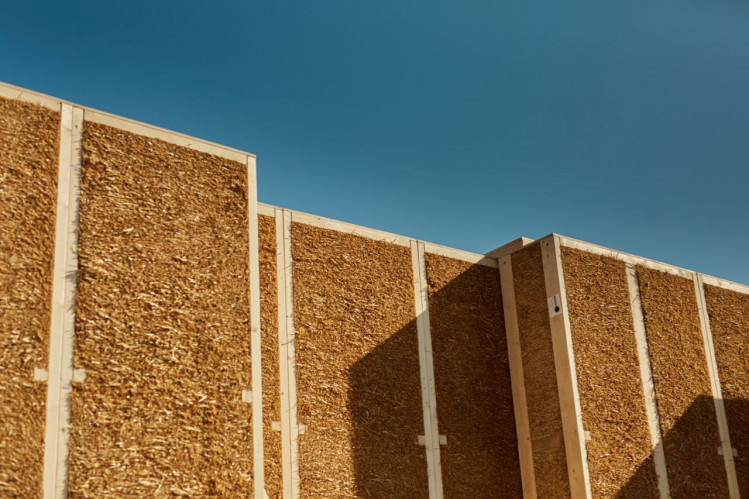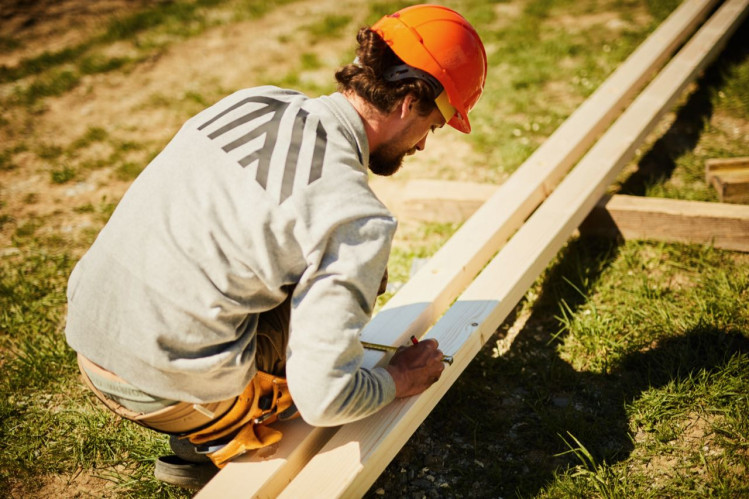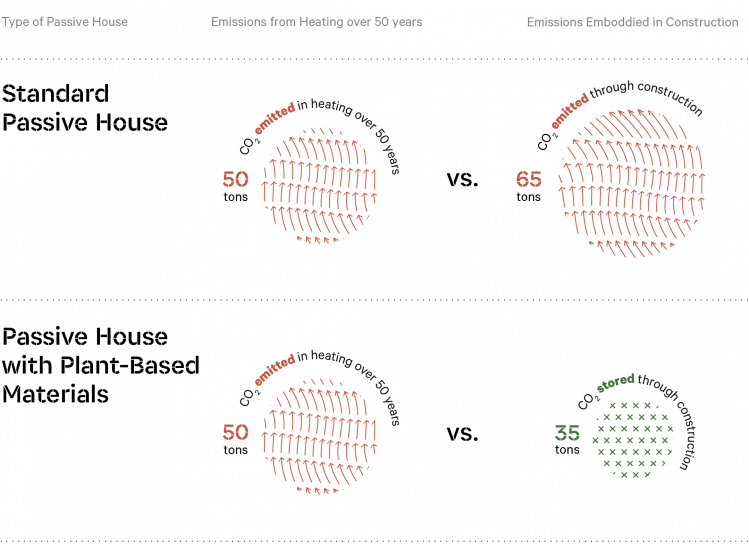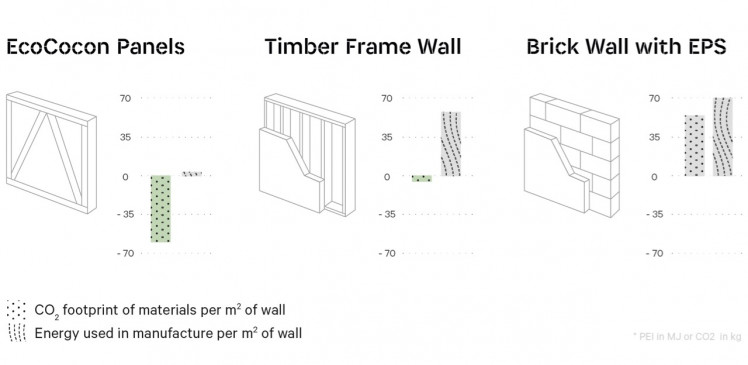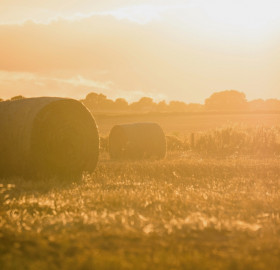Buildings as carbon storage
Conventional buildings can have a massive carbon footprint because of the emissions that come from manufacturing building materials. But buildings can also act as carbon storage.
How can we build our way out of the climate crisis using plant-based materials like EcoCocon straw wall panels?
The principle is quite simple: plant-based materials like straw and wood capture carbon dioxide from the atmosphere through the process of photosynthesis. When used in construction, they store the CO2 safely inside the structure of the building.
While on average 1 m2 of our straw-wood panels only weighs 55 kg, it stores almost twice as much CO2! 97.6 kg to be exact. How is this even possible?
Every CO2 molecule is made up of one carbon and two oxygen atoms. During photosynthesis, a plant absorbs carbon and releases oxygen. Carbon has an atomic weight of 12, oxygen an atomic weight of 16, making up for an atomic weight of 44 for one molecule of CO2 (12 + 2x16). So while absorbing 44 kg of CO2 from the atmosphere, 12 kg of carbon remains in the plant and 32 kg of oxygen is released.
A typical hardwood tree absorbs 22 kg of CO2 per year. This means it will sequester approximately 880 kg of carbon dioxide by the time it reaches 40 years old. If we assume that an average family house has around 150 m2 of wall surface, then building it with EcoCocon can store as much CO2 as 17 trees over 40 years. (150 m2 * 97.6 kg of CO2 / 880 kg of CO2).
Why choice of materials matters
When we talk about the carbon footprint of buildings, there are two things we should consider - the operational emissions (energy used for heating/cooling) and the up-front embodied emissions (from extracting, manufacturing, and transporting building materials).
To show the dynamics between the two, we can compare two seemingly identical family houses, both built to Passive House standard (ultra-low energy house).
While the first house is built with classic materials such as bricks, concrete, and polystyrene insulation, the second makes the most of natural materials such as wood, cellulose, and clay.
The conclusions are fairly straightforward: If you build with natural materials, it is possible to actually store half the CO2 (35 tons) you would otherwise release using standard building materials (65 tons). That makes a difference of 100 tons of CO2 for just one building!
Although EcoCocon walls can be huge carbon storage, we do not consider our buildings to be carbon negative, but rather carbon neutral. At the end of their lifetime, the buildings will be deconstructed and the stored carbon will be eventually returned to the atmosphere. But consider this: an EcoCocon building built to Passive House standard emits only about 1 ton of CO2 due to heating and cooling a year (6 to 10 times less than a standard building). So it would take 65 years for the EcoCocon building to emit the same amount of carbon dioxide as a conventional building will have emitted BEFORE it is even used.
Why other walls just can't compare with EcoCocon
Apart from storing an immense amount of CO2, our panels have a very low carbon footprint from the production process. Our Environmental Product Declaration shows that only 2.48 kg of CO2 is emitted to produce 1 m2 of panels.
When compared to other common wall types, the difference is staggering.
The choice is yours. Choose to be part of the solution.

